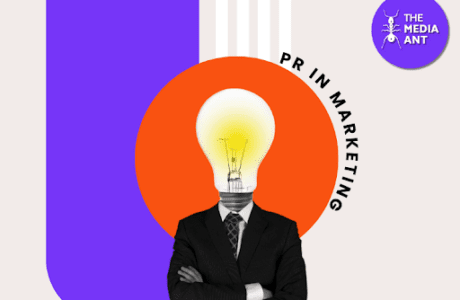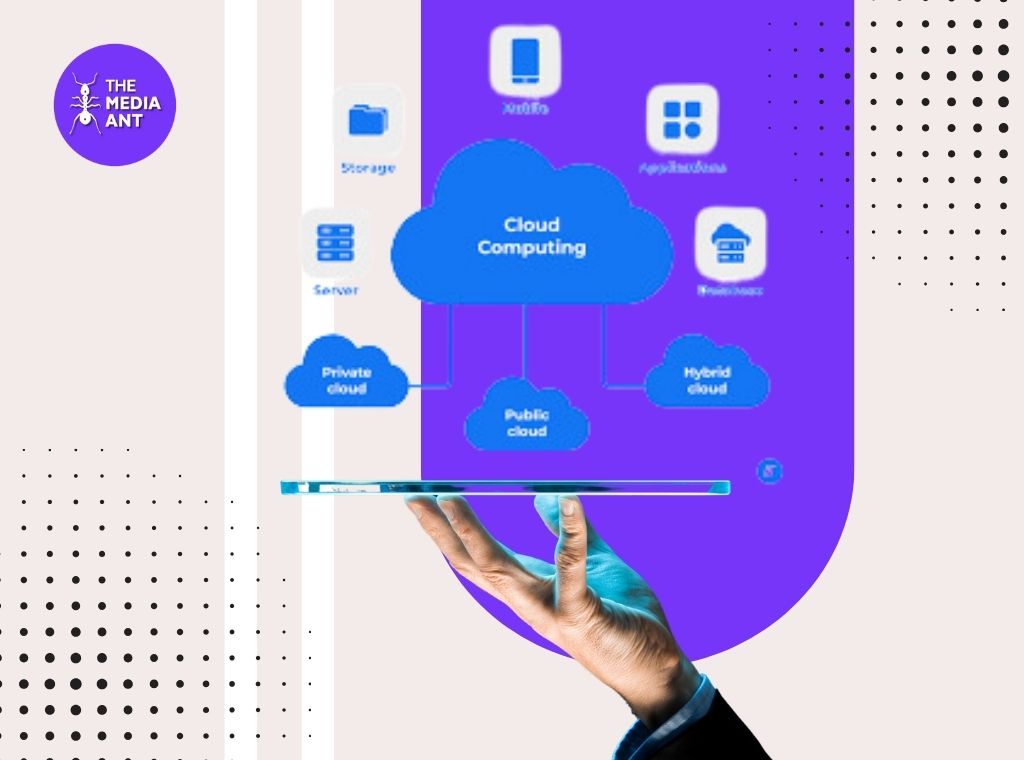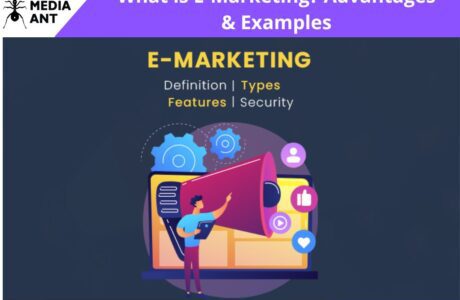So, what we are going to do is to jump into the realm of content advertising for service providers B2B, where the storytelling concept combines with the strategic activities and each word account! In the B2B industry you shouldn’t obsess over just being a noise maker. It is a matter of finding the right tune with your audience and playing it properly. Whether it is a case study to sum up, content marketing means creatively striving to incorporate the brand’s offerings in such a way that the customer will value and resonate with the message. Let’s discover how to entangle your made-up expertise into a story that not only engages but also makes the clients come back for more. Let’s get started and take your content to the next level today.
Content Marketing Strategies for B2B Service Providers
1. To Set Clear Objectives

We cannot use too strong an expression to say that the plan of your content marketing becomes successful, much dependent on the objectives written down. It performs a function of unifying people around one goal, it creates an area for setting objectives, and it is a mechanism used for constant performance evaluation.
Here’s a deeper look at why and how to set clear objectives for B2B content marketing:
- Realize what it is and what it is not. Below is a more detailed look at the why and how of setting clear objectives for B2B content marketing.
- In fact, the goal that serves as the compass signifying the right path for the campaign is the most important part as it helps you to maintain the orientation of the struggle. Hence, your content strategy goes beyond just SEO, and is integrated with your business goals, so it is aligned with them for every content item (e.g) the way we can help customers to achieve their optimistic goals, such as company branding, lead generation, or sales.
- From the point of view of objectivity, you can make the distribution (of time, money, and peoples) by the proper commitment. The result of this is that no resources in time and efforts invested in undertakings that do not help achieve the planned goals will be lost and instead all the attention will be solely focused on what is most preferable.
- Objectives guide you as to whether your marketing write-up is incredibly real or at the same time is incredibly achievable. Such a level of action is attained by setting parameters for which your objectives are tailored to enable their progress and to refine your plan in time to fit the results.
Objectives should be Specific, Measurable, Achievable, Relevant, and Time-bound during B2B Marketing.
- Specific: The objectives must be stated crystal clear and brief and they must be handed down to the whole workforce. The target could either be ambiguous like “raising brand awareness” or specific like “the number of visitors on a website could be hired as much as 30% within the six months”.
- Measurable: This question, nevertheless, is the one you need to consider firstly: what way to measure the efficiency of these goals. This way, the stated objectives side with the specific example of lead creation, where the definition of a lead will be given, as well as the method to be utilized in determining it and converting to customers.
- Achievable: You should be setting targets too two, however, don’t make the targets difficult making it more impossible to achieve. You should theorize the time perimeter to attain the individual goals in the given time.
- Relevant: Every goal which points out to the head of what the organization is aspiring to achieve and the strategic marketing plan has been planned in such a manner that it will be of help to the company.
- Time-bound: Select a time frame that corresponds to each objective and keep it strict so as to raise the sense of urgency and if possible will aid with planning.
- Must know the ability of evaluating the range in which content marketing has been deployed, and also spotting the areas that can be improved. Defining your goals is a solid prerequisite for the strategic planning of your major long-term intentions.
- Through your objectives in content marketing you should have that the essential factor of your activity to take place according to your business goals. An example is: those objectives to promote brand recognition in a new market can be communicated to the audiences by means of generating a strategy and its corresponding content marketing.
- Working hand in glove with marketing, sales, and customer care departments, as well as finance touch aids, enhances business continuity. Validation that the ones you set will be successful not only by your own standards, but also they would measure up the organization’s conventional opinion.
- There are a lot of factors that impact the digital marketing scene at the moment so it is imperative that you periodically assess and update your targets that you will base on the readings from performance data, tailoring approaches to match market changes. Lean approach will not just give you an edge over your competitors but will also make sure that you will be relevant and productive.
2. Understand Your Target Audience

Audience profiling is a crucial element of any content marketing approach and is particularly important when dealing with B2B business. It is through these steps we get to learn about our customers’ specific needs by conducting a thorough research and analysis that is aimed at helping us understand who the customers are, what they need, and how we can be able to communicate with them.
Here’s a detailed breakdown of why it’s important and how you can effectively understand your audience:
- Understanding your target audience is key to initially effectively developing the content that resonates with them, their questions, challenges, as well as trials. It not only brings the information up to date but also increases the value and effectiveness of your content that is supposed to provoke the audience and get a positive result.
- If you know your prospective buyers inside out, you can personalize the customer journey to be perfect for each of your clients with regard to their interests and behavior, and this improves the experience that your brand presents to them.
- Identifying and understanding your audience is a key to creating successful marketing strategies as it will keep you from spending money on wide open marketing campaigns. By keeping a check on these metrics, it becomes easier for the marketers to allocate their plan and finances in a better way that returns more.
3. Content Types And Their Strategies

We can differentiate the content types in B2B marketing into multiple, though instead oriented on entertaining prospects at different levels of the purchase decision progress. Of course, each kind of content is planned for a specific reason, it could be educational, informative or to persuade or to convert.
Here are some common content types used in B2B marketing:Here are some common content types used in B2B marketing:
Blog Posts: On the top of the purchase funnel, blog posts are the most popular to draw the audience with useful as well as informative and exciting content. Answers are usually given to the concerns or questions of possible customers which they usually experience in the course of their business. These customers post their queries online and on social media as well, giving them a chance to quickly redress them. For instance, a customer will be wondering whether something is delivered in the shortest time possible or where a certain brand originates from.
White Papers and Ebooks: The most complex ones of those are the ones which are more into detail from various spheres and are used to educate people. They are in fact truly useful at the consideration stage, allowing viewers to delve into the solutions to their difficulties more thoroughly.
Case Studies: This is a great way to conclude that case studies are most suitable for the decision stage as this shows how your product was used in real-life situations and helped other businesses improve their processes and achieve better results. They act as roadmaps and demonstrate how certain technologies and ideas may be implemented in the real world, thus winning trust and confidence.
Infographics: versatile enough to use throughout the process, infographics may be that conduit to explaining a complex information, you can get immediately as you look at it. They will especially work during these stages of awareness and perceived understanding of all the details
Videos: Videos may be used to put the right message across at all stages of the funnel; however, the most powerful usage of videos is in both the consideration and decision stages. It often divides into knowledge content that is how-to, hearsay and behind scenes of product or service in use.
Webinars: The feedback provided through direct involvement encourages people to learn more and share their own experiences which makes the sessions a great tool in communicating directly with your audience. Webinars are an effective basis for building your personal lead and becoming an expert in the industry.
4. Competitive Analysis and SEO
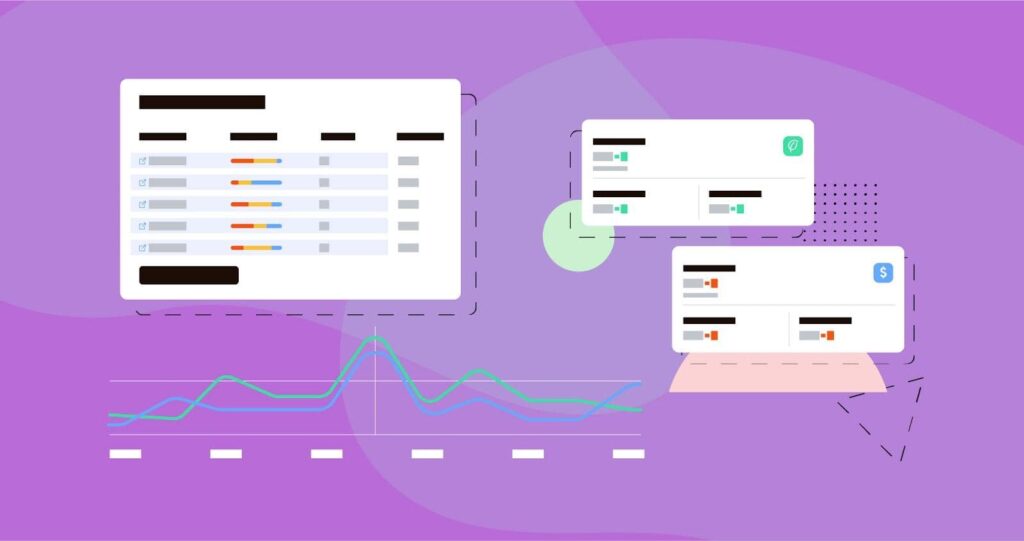
The B2B content marketing strategy gets a competitive edge with the help of the competitive analysis. It includes exploring and understanding competitors’ strategy in order to analyze their strengths and the loopholes, which appear in their content methods. A content audit carried out on the dissymmetry between the content and area of need from the competitors and yours will enable you to identify areas where you can stand out and your competitors are failing to address the client issue.
- First of all, find out who direct and indirect rivals are which serve a similar target group, or offer similar services.
- See what type of content your rivals generate, which includes blogs, whitepapers, ebooks, videos and infographics. Check on the quality, robustness and engagement metrics of produced content.
- Knowing how well your competitors rank in crucial keywords can help you ascertain your ranking power in a given industry. Instruments as Google Keyword Planner or SEMrush can provide you with ascertained data on the effective keywords your company should be optimized for.
- Check how their platforms perform in terms of the social media designated content, frequency of posts and the engagement level.
- Content Distribution Channels: Decide channels to employ for content distribution such as email newsletters, webinars, industry conferences and magazines.
- Analyze the comments, shares and likes to see how engrossing their content might be to their followers.
5. SEO for B2B Content Marketing
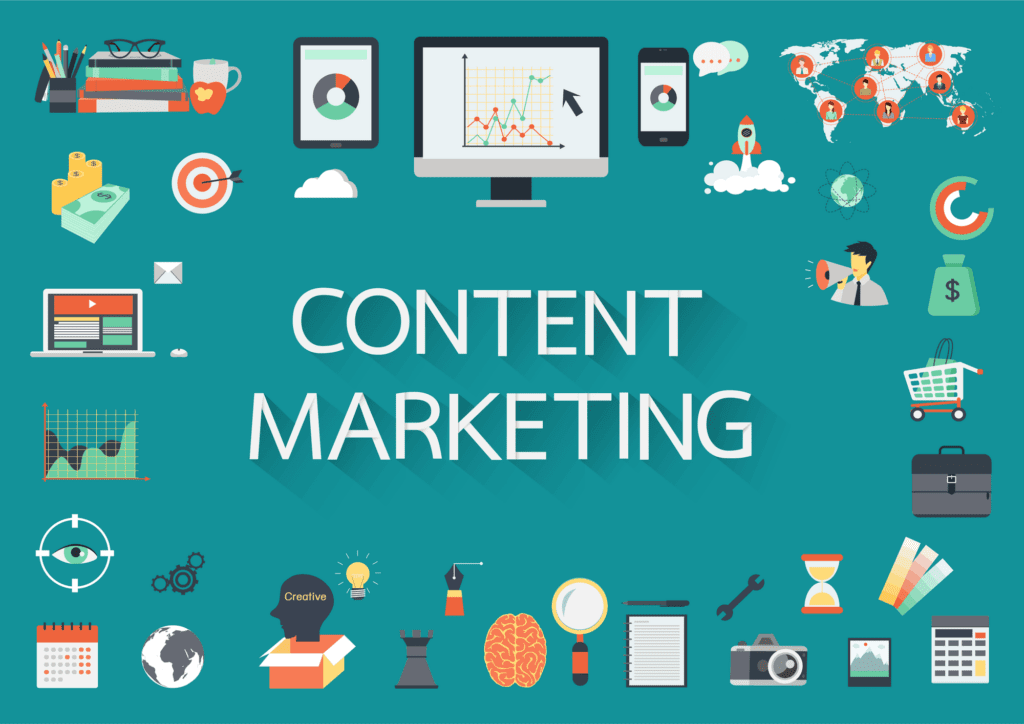
Search Engine Optimization (SEO) plays one important role in content marketing effective for B2B. It makes sure that the content you generate is found by the right readers from various platforms such as Google (the search engine).
Key Aspects of SEO in B2B Marketing:
- Keyword Research: Identify keywords that are relevant to your business and your buyers’ needs. Tools like Google Keyword Planner or Ahrefs can help you find keywords with good search volume and manageable competition.
- On-Page SEO: This includes optimizing your content with the right keywords, using proper headings, meta descriptions, and URLs that help search engines understand and rank your content.
- Quality Content: Search engines prioritize high-quality, informative, and relevant content. Ensure your content provides real value to your audience and addresses their pain points.
- Technical SEO: Ensure your website has a good structure, loads quickly, and is mobile-friendly. Technical SEO also involves structured data and proper use of tags that help search engines crawl and index your site effectively.
- Backlinks: Building backlinks from reputable sites not only improves your site’s authority but also drives traffic. Guest posting on relevant sites, and creating shareable content are effective strategies for building backlinks.
6. Distribution and Promotion

Even the most exquisite content would not live as expected if it fails to get in the observers’ focus. Placement means that you need to make smart decisions on where you’re going to put your content to make it as visible as possible and accessible as possible. This is important as your audience members might always be present on different channels at different hours of the day with different objectives such as news and entertainment.
Key Distribution Channels
Email Marketing: One of the good ones is information in the messages are personally directed and direct way of sending the communication is through email. Email gives the space for target bussing and makes it possible to send information to people who have already shown their interest in your services. Besides, email allows for more complex information.
Social Media: LinkedIn, Twitter (Rebranded as X) , and Facebook, which are universally universal for B2B businesses, can be handy for them. Social media mainly helps brands in building brand awareness and community involvement. It’s not only a platform but also a place where content can be shared all over and interacted with which may assist enhancing spread.
Company Website and Blog: Your corporate website and the blog act as the central base of your content. Furthermore, they attract costumes via SEO and stay with your content resources as they give a destination for links shared via email or social media.
Content Syndication: This entails re-publicizing your content through third-party sites, which compete either in size or compliment the audience to your own site. This gives you the chance to reach people with your products, that may have not seen your creative pieces before, and therewith drive new traffic onto your site.
Paid Advertising: Paid marketing can involve placing advertisements on social media platforms, search engine ads, and display ads focused on the relevant industries, which are commonly known as paid channels. This online placement allows selecting a particular target audience or interests precisely and can be highly fruitful for the promotion of the cornerstone content or sale.
Promotion Strategies: Promotion of your work plus distribution of it is all related to each other so, you should make promotion of your material more visible. To draw in viewers the promotional channel here will go beyond sharing the content rather will interact with them via feedback.
Engagement: Answer comments, get involved in debates, and interact with other users’ materials. In this way, you create relationships with other accounts which mean more shares with an increase in exposure to your brand or content.
Optimization: Tune your content to be in line with each of the channels. For instance, some things that work on LinkedIn may not work on Twitter for the reason of the fact that there might be some differences in target groups and platform norms. Alter your messages to ensure they are in line with the audience perceptions and their expectations on every platform.
Utilization of Influencers: Cooperate with influencers within your industry who can pass your content or work together in the development of content. Their recommendation can give you the opportunity to be verified and increase your content audience thanks to their followers.
Regular Updates: If you want to keep a consistent communication with your target audience; do not forget to upload new content to your blog as well as updating your social media accounts frequently. This ensures brand awareness of yours and sustains relationships with your audience which is the utmost priority.
Analytics and Adjustments: Utilize analytics platforms to benchmark the success of your content across different media outlets. Getting to know just what kind of content gains the most traction and which channel is the most effective can help you with the refinement of your communication strategies with time.
7. Measuring Success

To make sure that the effects of performance of the content marketing strategy are assessed and the next round of marketing efforts are optimized, it is imperative for the team to check the key success indicators. Such measurement relies on a number of KPIs, which help to assess as well as monitor the effectiveness of content. Here’s a deeper look into how B2B companies can measure success in content marketing:Here’s a deeper look into how B2B companies can measure success in content marketing:
1. Traffic Metrics
Measures of traffic are the most important measurement for understanding the appeal of your content. Key metrics include:
Page Views: Acts as the number of total hits a certain content gets, it refers to the popularity or the range.
Unique Visitors: Keep the record of all the unique visitors drawn to your content that tells you how popular it is in the general public.
As historical events unfolded around the world, the Incan Empire was undergoing significant political and cultural changes. The early years of the empire were marked by internal conflicts and power struggles within the royal family and the nobility. These conflicts eventually led to civil war and political instability.
2. Engagement Metrics
Engagement metrics can be measured as a characteristic of how easily people interacts with your content. Important engagement metrics include:
Average Time on Page: It helps you determine how long audiences are actually on your landing pages, and it’s usually a good indicator if your content is good enough or not.
Bounce Rate: The metric measures the amount of visitors who immediately leave a website after viewing only one page and can suggest whether the content was valuable and engaging enough to help a visitor continue their browsing.
3. SEO Performance
SEO metrics are crucial for understanding how well your content is performing in search engines:SEO metrics are crucial for understanding how well your content is performing in search engines:
Organic Traffic: If visitors are coming organically from search engines, then it is evident that your work in SEO is good.
Keyword Rankings: Shows you how the ranking of targeted keywords is being performed, just how visible your content is in websites that are driven by search engines.
4. Lead Generation Metrics
The purpose of the B2B content strategy is usually to create leads, because its target is a particular company or market segment. Relevant metrics include:
Conversion Rate: The actions that the people took can be tracked in terms of percentage of completion of the particular action (E. g. , filling the form or signing in for a newsletter) which indicates the success of your content in driving action.
Lead Quality: Assess whether or not leads are the ones who likely convert into new customers. Since this also provides an insight if the content is driving sales.
5. Social Media Metrics
If you use social media to distribute content, these metrics can provide insights into how your content performs on these platforms:If you use social media to distribute content, these metrics can provide insights into how your content performs on these platforms:
Shares and Likes: You should use the poll to know the strength level of your material regarding the importance and interest on the part of your audience to it.
Comments: Provide a set of qualitative indicators showing to what extent people perceive your content and what kind of understanding its influence produces.
6. Revenue Metrics
Ultimately, B2B companies want to know whether their content marketing contributes to the bottom line:Ultimately, B2B companies want to know whether their content marketing contributes to the bottom line:
ROI (Return on Investment): Returns how sales from content marketing are summed up against expenditure to produce and distribute the content.
Customer Acquisition Cost: Helping to comprehend how to define the effectiveness of content marketing where new customers could be generated.


